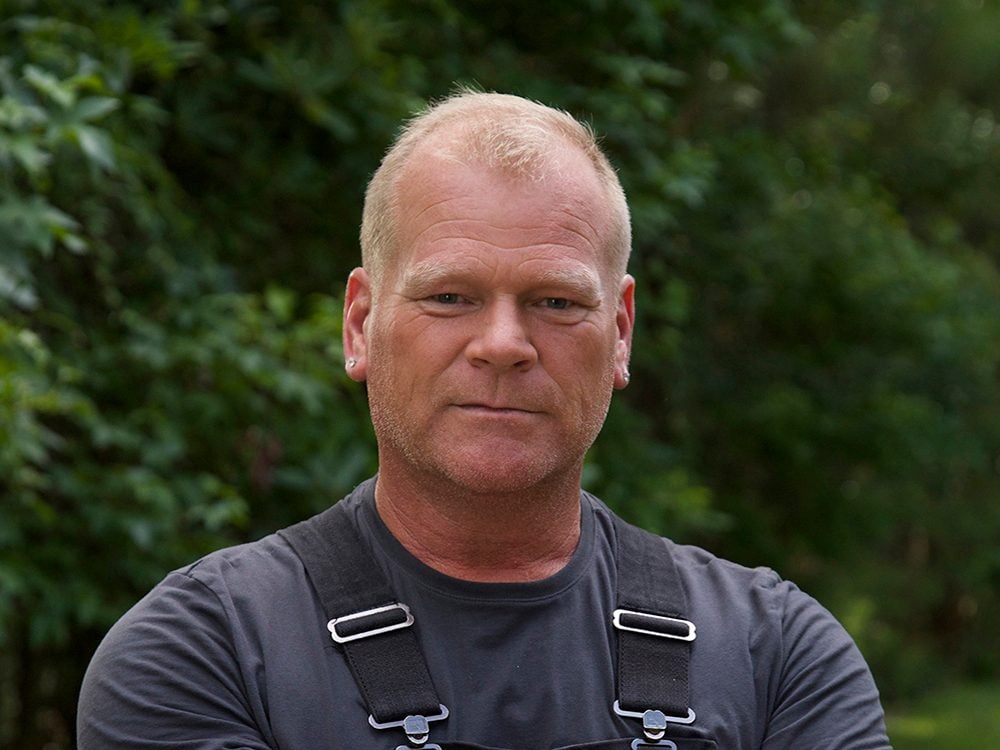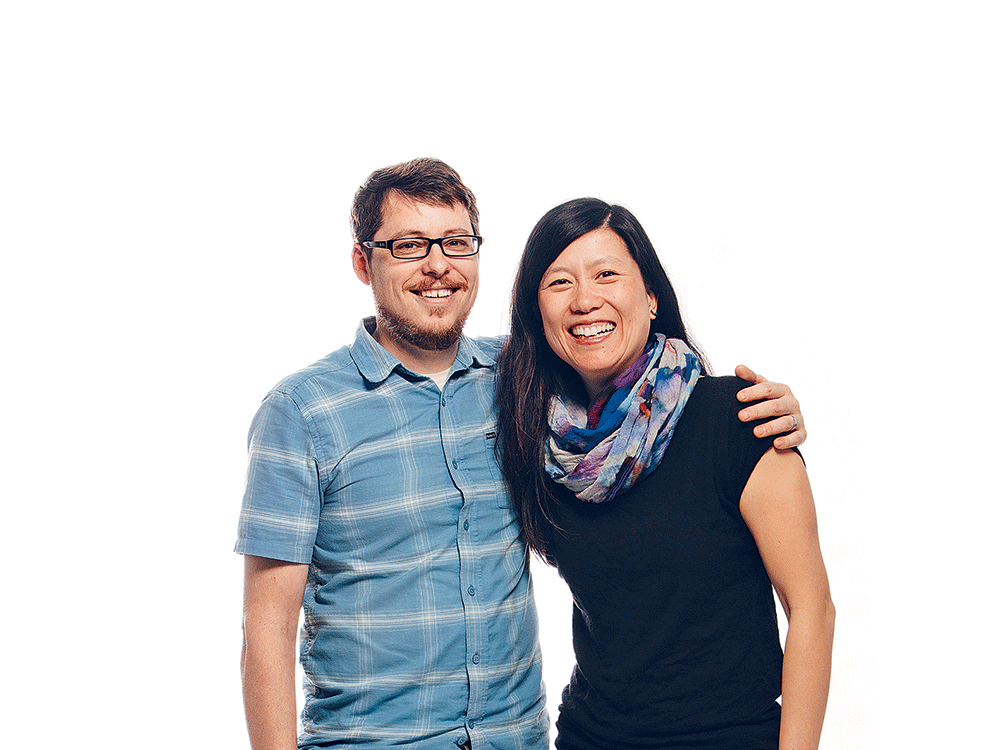What Your Marriage Counsellor Doesn’t Want You to Know
1. Sixty-nine per cent of all arguments between you and your partner will never be resolved. So don’t try so hard. (Here are seven easy ways to make your relationship last.)
2. A couple that doesn’t fight is in trouble. (Check out the most effective strategies for sorting out 10 common lover’s quarrels.)
3. Having a “good enough” marriage is the most couples can expect and is actually quite an accomplishment. (Saying these little phrases daily to your husband or wife could help you stay close.)
4. Letting go is sometimes better than discussing everything to death. (Check out The 7 Stages of Marriage.)
5. Respect, not sex or money, is the most important factor in a happy marriage. (Learn why movie sex is ruining your relationship.)
6. There are marital breaches worse than an affair. (Looking to get over a breakup? Here are 15 things you should never do.)
7. A therapist cannot teach, train, or guide you to “be happy.” That is not a reasonable outcome to expect from therapy. (Psychologist and marriage expert John Gottman debunks seven common marriage myths.)
Plus: Can Long Distance Relationships Really Work? What the Surprising Science Says
Preventing Identity Theft at the Office
Identity fraud is more common than ever. And it can start at the office, with pay stubs, personnel files or even trash bins full of personal info for the taking. “We’re comfortable at the workplace, so we leave documents lying around,” says Paul Wing, co-author of Protecting Your Money, Privacy and Identity From Theft, Loss and Misuse. “We think it’s a safe place, but it’s not.” Here’s how to protect yourself:
- Ask questions. Where is your personal information stored? How long is it kept on file? Is it shredded before it’s discarded?
- Be coy about what you disclose. Does your boss really need your birthdate? “Be careful not to give out more information than you need to,” says Philippa Lawson, director of the Samuelson-Glushko Canadian Internet Policy and Public Interest Clinic at the University of Ottawa.
- Leave your personal life at home. Avoid using your office computer, phone or fax for personal transactions such as banking or credit-card purchases. “Minimize the personal things you talk about,” Wing says.
- Safeguard your stuff. Keep your purse or wallet with you or in a locked drawer, not on a shelf or in a coat pocket: Your SIN card or driver’s license could be copied and put back, and you’d never know.
- Protect against intruders. If possible, keep your office door locked. Notify security of suspicious strangers. Or ask the intruder why he’s there, says Sgt. Marc Butz of the Quebec provincial police. “If he’s not supposed to be there, he’ll leave.”
Plus; 7 Photos You Should Never, Ever Post on Social Media

Harnessing the Power of Flowers
It took multiple weddings and a funeral for Christine Law to realize what she needed to do. In the summer of 2014, her calendar was packed with friends’ marriage celebrations—blossom-filled occasions that got her thinking, “Where do all the flowers go after the party?” More often than not, they were thrown out. Law, then 27, was confident she could find a better use for them.
By August, the Montreal-based commercial analyst had a plan: convince couples and companies hosting events to donate their bouquets, which she would pick up and deliver within 48 hours to seniors across the city. She was drawn to the prospect of bringing beauty into the lives of older people—and finding opportunities to forge relationships with them. Having lived with her grandparents between the ages of seven and 14, when her beloved grandfather died, Law knew how valuable an intergenerational connection could be. She drew on her experience volunteering with non-profits in order to set up her own organization, which she called Floranthropie.
The inaugural delivery—20 tropical arrangements—was to a long-term care facility in Montreal’s east end, where a friend’s mother worked. Not having enough bouquets for all 150 residents, Law asked the staff to provide a list of patients who needed cheering up the most, whether it was because of a rough patch or a lack of visitors. “The first woman I approached thought it was a mistake, that the flowers couldn’t possibly be for her,” says Law. “I said they were a gift, and we talked for a half-hour.”
One man followed Law around, gazing at the blooms, even though he remained silent. “He wasn’t on my list, but I offered him a bouquet and he brought me to see his room,” she says. “There were floral decorations and artificial flowers everywhere. That’s when I really understood that all kinds of people, men included, like something lovely to look at.”
In addition to long-term care facilities, Floranthropie focuses on seniors’ residences and community groups dedicated to the elderly. Laëtitia Thélème is a volunteer coordinator for Les Petits Frères, an non-profit organization that aims to help isolated elders who don’t have a support system. The group receives monthly deliveries of a dozen or so bouquets from Floranthropie, then redistributes them. “Our motto is ‘flowers before bread,’” says Thélème. “We aren’t focused on primary care, but rather on nourishing the spirit. Floranthropie helps us do that. It’s amazing what a big difference a small bouquet can make.”
Those small bouquets are possible thanks to a seven-person crew comprising mainly Law’s family and friends, including her close pal, Diana Ocvirek. “The act of offering a flower is a symbolic one—it can represent gratitude, joy, love or friendship,” Ocvirek says. “It’s also a simple gesture that provides hope.”
In the beginning, most of Floranthropie’s donations came through word of mouth: friends of friends who were getting hitched, a Concordia University staffer who had organized an event for the school. These days, Law receives inquiries from strangers via her non-profit’s Facebook page and has connected with corporations and flower wholesalers. The group was finally able to buy a delivery van last fall and is currently looking for rental space. (Previously, Law used her car for transport, or booked a truck if necessary; flowers were often stored at her apartment.) Law hopes to expand Floranthropie nationally, but at this point is happy to be able to oversee each delivery personally.
“One of my cousins recently told me she thinks our grandfather would have been proud of what I’m doing,” she says. “He’s guided me—it’s as if he’s been following me this whole time. Flowers are lovely to look at, but more importantly, they’re a tool to kick-start a conversation and foster a connection. That’s my real priority.”
These great Canadians are making an impact within their own communities.

As the age-old cliché goes: On their deathbed, no one has ever said, “I wish I had spent more time at the office.” Hindsight may be 20/20, but wouldn’t you like to know—ahead of time—what you will regret at the end of your life? A study by two professors of psychology could give us a surprising clue.
Professors Mike Morrison of the University of Illinois at Urbana-Champaign, and Neal Roese of the Kellogg School of Management at Northwestern University in Illinois, sent out a random-digit telephone survey to 370 American men and women. According to their results, relationship-based regrets outweigh those of education or career.
Eighteen per cent of respondents regretted a past romance and lost love, and 16 per cent had family-related regrets. Education (13 per cent), career (12 per cent), and finance (10 per cent) fell in the middle range, while parenting and health made up nine and six per cent, respectively.
That means a combined 43 per cent of regrets are tied to our relationships (including past romance, lost love, family, or parenting), while work-life regrets (such as education, career, and finance) make up 35 per cent, on average.
Surprised? Probably not. Relationships have loads of science-backed health perks, after all, such as reducing depression and heart disease. Plus, friends and family simply make us feel happier and more fulfilled. (Here are seven ways to make your relationship last.)
“People crave strong, stable social relationships and are unhappy when they lack them; regret embodies this principle,” the study’s authors write. (Uncover the most effective strategies for sorting out 10 common lover’s quarrels.)
Thankfully, there’s an easy solution to avoiding regret—no matter what it’s about. We can start by distinguishing the two types of regrets, according to theage.com: things we did but now wish we hadn’t, and things we didn’t do but now wish we had. Although regrets about our actions are about as common as regrets about inaction, it’s harder to let go of regrets about inaction. Translation? Don’t be afraid to take more risks in love, work, and life!
Plus: Can Long Distance Relationships Really Work? What the Surprising Science Says

Mike Holmes reveals the right way to buy a house
For most Canadians, purchasing a home is the single-most expensive investment there is. But even before hiring a home inspector or making an initial offer, first-time home buyers have already made one huge mistake, according to Mike Holmes: they haven’t educated themselves.
“Most people are buying their homes based on impulses: they like the house because of the kitchen or the backyard or because it was across the street from a school,” says Holmes. “The biggest problem is they’re not buying with an understanding of the house or neighbourhood.”
The popular contractor returns to Canadian television screens with Holmes: Buy It Right, a new series in which he uses his expertise to guide couples through the home-buying process. In each episode, potential homeowners pick three houses, and Holmes provides them with tools to spot problems and plan repairs before making a down payment on one of the properties. By the end of the episodes, he says, the would-be homeowners are telling him what’s wrong with the house.
“Many buyers aren’t paying attention to what the house really looks like,” he says. “If you see something that appears to be wrong on the outside, remember where that is and take a look on the inside; by doing this, at least you’re starting to be aware of possible issues.”
While repairs like waterproofing windows and installing secure hand railings are common, bigger problems like water damage or electrical work that doesn’t meet current codes are red flags. In those situations, Holmes says it’s important not to do-it-yourself.
“Don’t be afraid to hire the right people,” says Holmes. “If you really don’t know anything, then you shouldn’t play with electrical, plumbing and certainly not structure.” Even projects like painting and trim require owners to educate themselves: the last thing you’d want to do is put a latex paint over an oil paint. (Here are the home improvement projects you should never do yourself.)
Knowing these things, says Holmes, also puts you on an even playing field with real estate agents.
“In today’s world, a lot of people are waiving conditions just to get the house, so you really do want to have some bargaining power when it comes to buying that home,” he says. “When you understand why certain things need to be repaired and how much it’s going to cost to fix it, that gives you room to negotiate.”
Holmes: Buy It Right airs on HGTV Canada on Sunday, Sept. 10 at 9 p.m. ET.

When you think of Queen Elizabeth II, you probably have a very distinct outfit in your mind: coloured suit, hat, handbag, and of course, a pair of gloves that help her make the most regal of waves.
Cornelia James glove makers have been in charge of the royal gloves since the founder made gloves for Queen Elizabeth II’s honeymoon in 1947. Genevieve James, creative director and daughter of the founder, says the Queen wears gloves for a few reasons. Not only would an outfit with a hat and handbag look utterly unfinished without gloves, but they protect her hands from dirt and damage when shaking hands all day. But that doesn’t mean she comes home with a pair of grimy gloves. “I imagine she always has two or three pairs in her handbag to spare,” says James. By the way, you’ll never guess the real reason Queen Elizabeth carries a purse or why she wears bright outfits all the time.
The Queen will also get the gloves washed and repaired rather than tossing each £110 ($140) pair out as soon as they see any damage. “I think the royal family wants to be seen as being economical, not wasting money on things like that,” says James. “She’ll wear her gloves for 40 years and will pull some out from a long time ago.” Instead of buying a new pair every week, the Queen usually makes a big order of, say, three dozen pairs, then won’t go back the rest of the year.
Queen Elizabeth II typically wears the gloves from the Francesca or (fittingly) Regina collection, with the length custom-made. Her gloves stretch five inches from the base of the thumb up the arm. “When you’re the Queen and you’re shaking hands, you don’t really want to show your arms,” says James. “The glove goes a bit under her [sleeve], so you don’t actually see any arm.” Each pair takes about 45 minutes to an hour to make, she says.
For years, the Queen’s classic gloves have been made of brushed cotton. Recently, though, she requested something a bit lighter, so James found Swiss cotton jersey from a factory in Switzerland. “I ordered 70 metres, which is a lot of gloves, but it’s the Queen,” James says.
Queen Elizabeth II isn’t James’ only royal client. Princess Anne comes to Cornelia James, and James says her mom was responsible for getting Princess Diana into gloves. “Princess Diana never wore gloves for a long time, and my mother noticed she bit her nails,” says James. “She said she should wear gloves. The next day we got a call from the palace…and Diana asked for gloves.” Check out more fashion tips to steal from Princess Diana.
Cornelia James Ltd. has also made gloves for Kate Middleton. The Duchess of Cambridge is a fan of merino wool gloves with a bow from the Imogen collection—the same ones Taylor Swift wore in her “Blank Space” music video. Some of James’ other famous clients include Rihanna, Madonna, and the Harry Potter, Downton Abbey, and Mama Mia casts.
James has met the Queen in person once, but it’s an experience she’ll never forget. She and other royal warrant holders did a Christmas fair in Buckingham Palace to sell their goods. James went with handbags, gloves, and other small goods, so she didn’t stand out as a glove maker.
Suddenly, a hush fell over the room, and someone said the Queen was there. The Queen went right in front of James, wearing a bright green suit. James was in awe. “I bowed—I didn’t curtsy—and said, ‘Your majesty, I’m your glove maker,’” James says. “She says, ‘I know exactly who you are.’”
It’s no surprise that even though they’d never met in person, James’ company made a big impact on Queen Elizabeth II. Those gloves are important enough to the Queen that she made an emergency call in 2004, when she was about to go to Korea and her order of white gloves hadn’t arrived yet. Luckily, the company had similar ones on hand, so James’ husband hopped on his motorbike to drive the hour and a half from their workhouse in Sussex to London, the gloves in his backpack.
This happened to be the day of the London Marathon, so the shut roads meant he had to meander through alternate routes until he reached Buckingham Palace. Naturally, the guards didn’t believe that he actually needed to make an emergency glove delivery to the Queen. But the security guard also owned a motorbike, and the two got chatting. After the two bonded over motorcycles, the security guard let him through, says James. The original gloves would arrive later, but the Queen got the backups in time for her trip and couldn’t be more relieved.
“They’re an integral part of her outfit,” says James. “You never see her without gloves.”
Plus: This is How Much Each Person in the British Royal Family is Actually Worth

Great Canadians: Conrad Nobert & Anna Ho of Paths for People
On a frigid March morning, Conrad Nobert locks up his bicycle and crosses 102 Avenue, a multi-lane road in downtown Edmonton. By the summer of 2017, it will begin its transformation into a separated bike route connected to a seven-kilometre-long grid of safe bike tracks.
Until then, Edmonton will have the dubious honour of being Canada’s largest city without a dedicated downtown bike lane. But that’s changing thanks to Paths for People, the organization Nobert, a computer programming teacher, founded with his friend, neighbour and fellow parent Anna Ho, an environmental engineer. Since 2014, the pair has pressured the city to make it safer to be a cyclist or pedestrian in a place Nobert describes as resolutely “car first.”
Home to the world’s largest parking lot (courtesy of West Edmonton Mall), Alberta’s capital is renowned for its car culture. It’s the Canadian city with the most pedestrian fatalities per walk-to-work trip; a mere 15 per cent of pedestrians survive being hit by a car driving 60 kilometres per hour or faster, the standard speed on Edmonton’s wide streets. Until a few years ago, most citizens accepted these deaths as tragic, yet unavoidable.
That’s no longer the case. School-zone speed limits are back after four decades, and Edmonton recently became the first large city in Canada to adopt Vision Zero, a strategy borrowed from Sweden to eliminate traffic deaths and major injuries through bylaws and design. Seventy crosswalks are being rejigged, and then there are the new bike lanes, which Paths for People helped conceive. “You can’t develop a vision until you know what’s possible,” says Nobert.
For the 42-year-old, that realization came after he, his wife and their two young kids spent a few months travelling around Europe and Japan, where they felt safe cycling. When the family returned home in May 2014, Nobert was newly shocked by Edmonton’s unforgiving streets.
The municipal government had already designated two major inner-city roads for separated bike paths, but as of November 2014, only one had been recommended for funding. So Nobert and Ho created an ad-hoc group called the Edmonton Bike Coalition. They mobilized local cyclists to share their stories with city council and gathered 1,100 photos of locals holding signs proclaiming “I Bike.” By December 2014, the government had freed up $8.8 million for the paths, both of which should be complete by 2020.
Under the new name Paths for People, the coalition then set its sights on crosswalk safety and collected data on the alarming number of pedestrian and cyclist injuries—almost 5,900 between 2005 and 2015. Faced with this information, as well as mounting pressure from grieving families and Mayor Don Iveson, city councillors agreed to upgrade crosswalks in high-collision zones.
Paths for People’s most impressive accomplishment remains the downtown grid—a network of connecting bike lanes that was proposed, designed and approved over a few months in 2016. The group, which now boasts 500 active members, raised money to partner with an international engineering firm that wrote a plan Edmonton could quickly implement on a marginal budget of $7.5 million. And that’s great news for Karen Parker, a city employee and mother of three who’s dodged dicey traffic situations. “Some people think we’re crazy for riding our bikes with our kids,” she says, “but it can be fun and convenient. Plus we get a lot of exercise.”
As Nobert strolls downtown on this March morning, city council is in the midst of voting on Paths for People’s latest idea, Ciclovia, an event that would close a huge stretch of road to traffic and devote it to leisure pursuits. Just as he begins to unlock his bike, Nobert gets a text from Ho: “Motion passed on Ciclovia.” For cyclists—and all citizens—it’s yet another reason to celebrate.
Like to bike? Check out famed Canadian cyclist Clara Hughes’ RD Interview.

Tall, lean Steffi Wessa of Landau, Germany, had never had a serious illness, so when in late 2013, after she turned 55, her physician suggested they add a routine colorectal cancer screening by colonoscopy to her regular medical check-up, Steffi had no reason for concern.
Colorectal cancer (CRC), often called colon cancer, is a malignancy in the large intestine, that twisty tube through which waste products exit the anus. The last six or so inches of colon are called the rectum.
During the colonoscopy—examination of the entire colon with an endoscope—the doctor found two polyps, benign growths in the intestinal wall that have the potential to turn cancerous if left untreated. These the doctor removed during the procedure. But there was something more: a five-centimeter growth in the rectal area. It appeared to be a carcinoma.
A biopsy confirmed the physician’s suspicions: Steffi had colorectal cancer. On hearing the news, Steffi was distraught. “My world collapsed. To me, cancer meant death.”
Steffi was just one of approximately 447,000 Europeans to be diagnosed with colon cancer that year, and the numbers are increasing annually. Globally, CRC is the third most common of all cancers, and in continental Europe it is the second most common malignancy, after breast cancer which has about 464,000 annual diagnoses. It’s also the second most deadly, killing about 215,000 Europeans every year.
But it needn’t be a killer. Colorectal cancer, when discovered in its early stages, is one of the most treatable cancers. And Steffi’s had been caught early, before it could spread.
What puts us at risk of getting colon cancer in the first place? The risk increases with age—those older than 50 make up the vast majority of cases—but it can strike much younger people as well.
“There can be genetic factors, environmental factors, or an interplay between the two,” says Dr. Jordan Karlitz, MD, FACG, associate professor of gastroenterology at Tulane University School of Medicine in New Orleans, Louisiana. He notes that ulcerative colitis and Crohn’s disease can lead to the development of CRC if the illness afflicts a significant portion of the colon. A sedentary lifestyle adds to the risk.
The modern diet and lifestyle are believed to be among the most significant risk factors. A diet heavy on meat, especially processed meats, and light on fruits, vegetables and fiber, can predispose someone to CRC, as can smoking tobacco and drinking alcohol, says Dr. Luc Colemont, a Belgian gastroenterologist and managing director of the foundation Stop Colon Cancer. People who are obese or who have type two diabetes have a heightened risk as well.
A study published in January this year, whose lead author was Dr. Shuji Ogino, professor of pathology at Harvard University, suggests one reason why diet might affect your CRC risk. When we eat we are feeding the trillions of micro-organisms that live in our intestines. And if those well-fed micro-organisms are of the troublesome kind, they might pay you back by making you sick. CRC tumor tissue often hosts a nasty germ called fusobacterium nucleatum. The study found that people who ate a fiber-rich, healthful diet tended to have lower levels of these bacteria, as well as lower risk of CRC influenced by the bacteria.
But known risk factors still can’t account for all cases of CRC. “I saw people, 56 years of age, not overweight, never smoked, only a beer on the weekend, every day healthy food, and three times a week in fitness,” says Dr. Colemont. “But they have colon cancer.”
And doctors have recently reported an alarming rise in the incidence of colorectal cancer in people younger than 50—even among those in their 20s and 30s—which is why it’s crucial to see your doctor if you have any symptoms, even if they seem insignificant.
Early detection is the key to beating colon cancer. Every expert Reader’s Digest spoke to stressed the importance of screening for CRC. Screening “could potentially save more than half of the people who are dying from colorectal cancer,” says Dr. Karlitz. That’s a potential of more than 100,000 lives saved per year in Europe alone.
There are several types of screening, including a fecal test, a CT scan, a sigmoidoscopy and a colonoscopy.
Possibly the most common/readily accessible in Europe is the fecal test. It’s both simple and inexpensive. You get a kit from the doctor, follow the at-home directions for collecting a stool sample, and ship everything back. These tests look for blood in the sample that isn’t apparent to the naked eye. A positive result may be evidence of either pre-cancerous polyps or of cancer.
A positive result is usually followed by a colonoscopy, a test typically repeated every ten years. The individual fecal test can be less accurate than a colonoscopy, but because fecal tests are done more often, the likelihood of detection increases with each successive test.
A sigmoidoscopy, although similar to a colonoscopy, is not as extensive. In this procedure, the last 40 or so centimeters of the colon, plus the rectum, are examined by endoscope. Typically it is repeated every five years. Another, less common screening method is CT colonography—essentially a CAT scan of the colon. And a test using a pill-sized camera that is swallowed and videos the lining of the colon is available in a number of countries for those who can’t undergo colonoscopy.
But colonoscopy is considered the gold standard of screening. It can discover more abnormalities than any other screening test. It can detect more pre-cancerous polyps, and at an earlier stage, than fecal tests. That’s important because finding and removing polyps during colonoscopy can prevent about 80 percent of colon cancers, according to a 2012 study. That same report noted that, when people at average risk for getting colon cancer were screened via colonoscopy, the incidence of the disease fell by 67 percent and deaths were reduced by 65 percent.
But colonoscopy is an invasive procedure and it can be difficult to persuade people to get screened this way. When physicians in The Netherlands were seeking to increase screening participation, they sent out invitations to members of the population 50 and older, offering a variety of screening options. When the invitations yielded more than twice the number of participants for fecal tests than colonoscopies, that’s where The Netherlands focused its efforts. Today, the country has the highest rate of CRC screening in Europe. In Britain, too, a fecal test kit is sent every two years to everyone over 60 who is registered with a GP. In France, fecal tests kits are sent to everyone age 50 and older.
Screening rates vary dramatically by country—or even within the same country—but, on average, fewer than half of adults in Europe age 50 and older currently get tested for colorectal cancer.
Now 58, Steffi Wessa can attest to the value of screening. She might not be alive today without it. After her cancer was detected, she was treated with chemotherapy and radiation, which shrank the tumor, then surgery to remove it. Now cancer-free, she gets regular check-ups to ensure she stays that way.
Once you notice symptoms of CRC, putting off screening can be a bad decision. In early 2013, Belgian Filip Luypaert, 44, was focused on his career as a high-powered executive for an international medical device company. In great physical condition, he had no known risks for cancer. But he’d recently noticed blood in his stool. When he mentioned this to his GP, the doctor recommended a sigmoidoscopy, just as a precaution.
“I was running twice a week, ten kilometers, traveling around the globe for work,” Filip recalls. At his age and condition, neither he nor his doctor seriously believed he could have colorectal cancer.
So Filip put off screening for another six months, expecting the symptoms to pass. When he finally had a full colonoscopy in October 2013 it revealed that Filip had colorectal cancer. The tumor was too large to remove right away. Worse, further testing determined that the cancer had spread to his liver.
Filip searched the internet for survival rates in stage four CRC. The best case scenarios gave him only an 11 to 12 percent chance of surviving five more years.
He’d had so many plans. His girlfriend was in the process of emigrating from Singapore to be with him. How could he now ask her to leave behind her family, her professional life—everything—when he probably wouldn’t be alive for much longer?
If a tumor is too large to remove immediately, surgery will be necessary to cut away the diseased section of the colon. “In some countries, 50, 60, 70 percent of colon cancer surgery can be done by laparoscopic surgery,” says Dr. Colemont. This less radical type of operation involves smaller incisions than traditional “open” surgery, and often translates to faster healing.
Over five days’ time, Filip was given the equivalent of five weeks worth of radiation to shrink his main tumor enough so it could eventually be removed. Then came three months of chemotherapy, followed by surgery to remove the diseased section of his colon. At that point, to give his wound time to heal, surgeons redirected waste products from his lower colon to a stoma, a temporary opening in his abdomen. After another three months of chemo, it was time to operate on his liver. That was followed by more chemo.
It was almost exactly a year from the time of diagnosis to Filip’s last chemotherapy treatment. “I just had to live one day at a time, and that was, for me, very difficult, and especially to see the people around me suffering from my uncertainty and pain.”
After several setbacks, including two more surgeries to remove additional metastases on and near his liver, Filip finally got the news he’d been hoping for. At his last check-up, doctors found no trace of cancer.
And in April 2016 he ran again for the first time since his ordeal began, in a 10 kilometer race in Antwerp. His girlfriend plans to join him in Belgium.
Even if you’ve had colorectal cancer, there are steps you can take to mitigate the risk of your cancer recurring. Live a healthier lifestyle, of course, and maintain a healthy weight. But just as low-dose aspirin has been shown to reduce the risk of heart attack, it may reduce the risk of colorectal cancer, including hereditary forms. Dr. Colemont says that among people who take low-dose aspirin, “It seems that they have a lower recurrence rate than the people who don’t take it.”
It also may reduce the risk of dying of the disease if you’ve been diagnosed with CRC, according to a 2015 research report. And while no European associations have yet recommended aspirin for prevention in healthy people, the US Preventive Services Task Force came out in favor of a daily low-dose aspirin for certain people 50 to 59 years old, but only those who are not at risk for increased bleeding, and who can commit to taking it for ten years.
Vitamin D might also play a role in prevention, although the link isn’t proven. “We have population studies showing that of patients who have lower vitamin D levels, they have a higher rate of colon cancers,” says Dr. Grothey.
According to the US National Institutes of Health, two randomized controlled trials suggest that 1,200 to 2,000 milligrams of calcium per day may reduce the risk of polyps recurring. The American College of Gastroenterology recommends supplements to colorectal cancer survivors.
But the best way to lower your risk is to stay vigilant. If you are over age 50 and have never had CRC and have no symptoms, talk to your doctor about screening. Those who have had CRC or are at risk for getting it should be screened more often than the general population. And if you experience any of the symptoms associated with the disease, even if they seem mild and inconsequential, tell your doctor. Your life could depend on it.
Colorectal Cancer Symptoms
Colorectal cancer symptoms are often subtle and easily ignored. But if you have any of the following symptoms lasting for two or more weeks, it’s imperative that you talk to your physician about getting tested:
- Blood in stool or rectal bleeding
- Changes in your bowel habits
- Stool that is narrower than typical for you
- Unusual weakness or fatigue
- Weight loss for no apparent reason
- Feeling that your bowel isn’t emptying completely after a bowel movement
- Digestive pains (bloating, gas, cramps)
- Vomiting
- Diarrhea or constipation